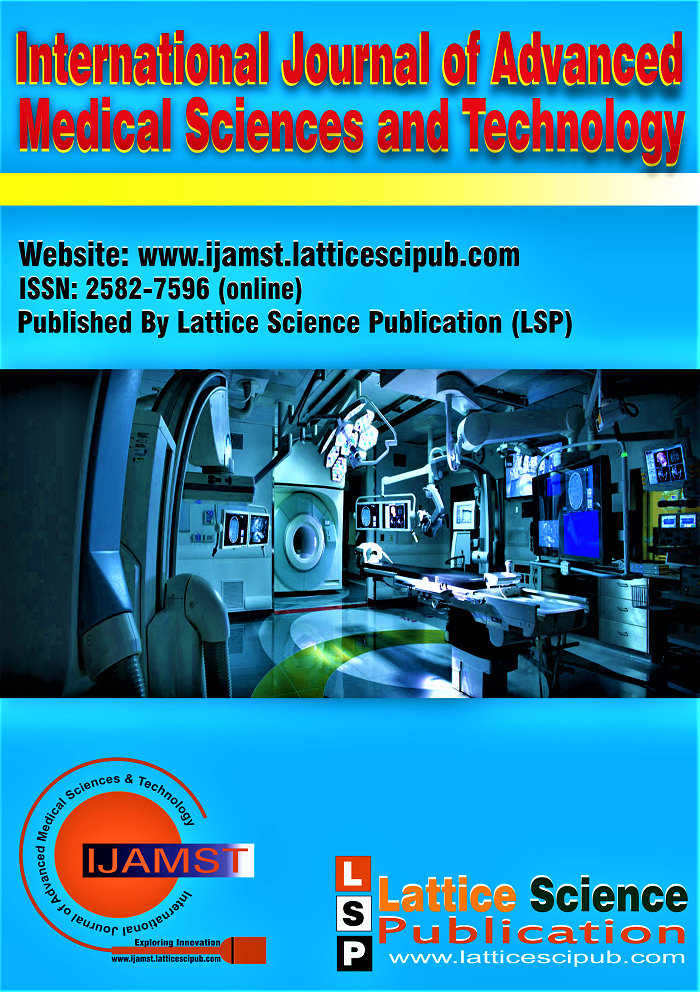Electronic Health Records (EHR) Extraction Using Various NLP Models
Main Article Content
Abstract
Information recorded in electronic medical health records, clinical reports, and summaries has the possibility of revolutionizing health-related research and its corresponding industry. EMR data can be used for epidemiological studies, disease registries, data banks, drug safety surveillance, clinical trials, and healthcare audits. With the rapid adoption of electronic health records (EHRs), it is desirable to harvest information and knowledge from EHRs to support automated systems and to enable secondary use of EHRs for clinical and translational research; thereby increasing efficiency. One critical component which is predominantly used to facilitate the secondary use of EHR data is information extraction (IE) task, which automatically extracts and encodes clinical information from a given text. Now, a natural language processing model (NLP) focuses on “developing computational models for understanding the interaction between data science and language”. In the clinical domain, researchers have often used NLP systems to identify clinical syndromes and common biomedical concepts from imaging data, radiology reports, discharge summaries, problem lists, nursing documentation, drug reviews, and medical education documents. These data can help doctors determine patients' health condition(s) including diagnostic information, procedures and tests performed, treatment results, drugs administered, and more.
Therefore, we hope to gain some insights and develop strategies to improve the utilization of these NLP systems in the clinical domain. We hope to provide a vision for addressing the existing data challenge(s) in this domain. For this, we would look at the various models that have been used/published over the years and test them for their attributes including effectiveness, accuracy, precision, etc. We believe that adding a probabilistic graphical model framework for structured output prediction would further improve the performance of our system. This experiment remains our future work.
Downloads
Article Details

This work is licensed under a Creative Commons Attribution-NonCommercial-NoDerivatives 4.0 International License.
How to Cite
References
Baer B, Nguyen M, Woo EJ, Winiecki S, Scott J, Martin D, Botsis T, Ball R. Can Natural Language Processing Improve the Efficiency of Vaccine Adverse Event Report Review? Methods Inf Med. 2016;55(2):144-50. Epub 2015 Sep 23. PMID: 26394725. doi. https://doi.org/10.3414/ME14-01-0066
Ruud KL, Johnson MG, Liesinger JT, Grafft CA, Naessens JM. Automated detection of follow-up appointments using text mining of discharge records. Int J Qual Health Care. 2010 Jun;22(3):229-35. Epub 2010 Mar 27. PMID: 20348557. doi. https://doi.org/10.1093/intqhc/mzq012
Rochefort, C. & Verma, Aman & Eguale, T. & Buckeridge, David. (2015). O-037: Surveillance of adverse events in elderly patients: A study on the accuracy of applying natural language processing techniques to electronic health record data. European Geriatric Medicine. 6. S15. doi. https://doi.org/10.1016/S1878-7649(15)30050-4
Kalra, Dipak & Singleton, Peter & Milan, J & Mackay, J & Detmer, D & Rector, Alan & Ingram, David. (2005). Security and confidentiality approach for the Clinical E-Science Framework (CLEF). Methods of information in medicine. 44. 193-7. 10.1267/METH05020193. doi. https://doi.org/10.1055/s-0038-1633945
St-Maurice J, Kuo MH, Gooch P. A proof of concept for assessing emergency room use with primary care data and natural language processing. Methods Inf Med. 2013;52(1):33-42. Epub 2012 Dec 7. PMID: 23223678. doi. https://doi.org/10.3414/ME12-01-0012
Khare R, Li J, Lu Z. LabeledIn: cataloging labeled indications for human drugs. J Biomed Inform. 2014 Dec; 52:448-56. Epub 2014 Aug 23. PMID: 25220766; PMCID: PMC4260997. doi. https://doi.org/10.1016/j.jbi.2014.08.004
Shashi, Dr. M. (2022). Leveraging Blockchain-Based Electronic Health Record Systems in Healthcare 4.0. In International Journal of Innovative Technology and Exploring Engineering (Vol. 12, Issue 1, pp. 1–5). doi. https://doi.org/10.35940/ijitee.a9359.1212122
Patel, I., Jain, S., Vishwajeet, J. K., Aggarwal, V., & Mehra, P. (2021). Securing Electronic Healthcare Records in Web Applications. In International Journal of Engineering and Advanced Technology (Vol. 10, Issue 5, pp. 236–242). doi. https://doi.org/10.35940/ijeat.e2781.0610521
Hussain, Dr. M. K., Hussain, M. J., Bakri, M., Abdurraheem, T. M., & Al-Areefi, M. (2020). Big Data in Healthcare. In International Journal of Recent Technology and Engineering (IJRTE) (Vol. 8, Issue 6, pp. 2127–2131). doi. https://doi.org/10.35940/ijrte.f8100.038620
Khan, N. D., Younas, M., Khan, M. T., Duaa, & Zaman, A. (2021). The Role of Big Data Analytics in Healthcare. In International Journal of Soft Computing and Engineering (Vol. 11, Issue 1, pp. 1–7). doi. https://doi.org/10.35940/ijsce.a3523.0911121
Jeyaraj, B. Dr. P., & Narayanan AVSM, L. G. T. (2023). Role of Artificial Intelligence in Enhancing Healthcare Delivery. In International Journal of Innovative Science and Modern Engineering (Vol. 11, Issue 12, pp. 1–13). doi. https://doi.org/10.35940/ijisme.a1310.12111223





